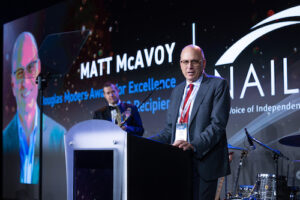Hard skills and soft skills aren’t enough.
The job world is changing so rapidly it’s next to impossible to know what to do even in the short term to get ahead, let alone five years down the road.
Now, a debate rages between which is more important, hard skills or soft skills. Those for hard skills focus on the need for specific knowledge to meet job performance standards and expectations.
On the other side of the table are those who say the hard skills path can lead to dead ends, to obsolescence. They bet on possessing interpersonal skills, such as the ability to relate to others, being a good team member, and communicating effectively.
A case can be made for a combination of both hard and soft skills. Yet, it may be too narrow a view for dealing with what is arguably the most critical need facing companies today—people who can fix things.
The Need to Fix Things
A Department of Labor bulletin describes the fix-it problem clearly: “Employers want employees who can work through problems on their own or as an effective member of a team. Ideal employees think critically and creatively, share thoughts and opinions, use good judgment, and make decisions.”
Employers say they need people who not only how know how to do things, but more importantly, they need people who know how to fix things. The goal is not just doing a good job but having the ability to identify, analyze, and solve problems.
“No manager wants to hire someone who can’t think for themselves and comes running every time things go wrong,” writes Courtenay Crawford in Graduateland, while another employer survey named complex problem solving as the No. 1 desired skill. It also revealed that by 2020, “36% of all jobs across all industries” will require complex problem solving as a core skill.
In other words, business needs people who not only recognize problems but take ownership and fix them:
- “Thanks for letting us know, I can take care of that for you.”
- “If we made this change, we could reduce costs.”
- “We’re replacing this part. It will solve the problem.”
Whether you call it problem solving or more accurately, the ability to “fix things,” the need is clear.
What It Takes to Fix Things
- Get the message
“I didn’t see it coming.” Whether it’s layoffs, the closing of a business, the sale of their company, or being fired, it’s surprising how many workers say they didn’t see it coming. Some are totally shocked and actually speechless, while others sensed that “something” was about to happen. “It was obvious,” they say, “How could you miss it?”
In other words, how can anyone fix something when they’re unable to recognize problems? Anyone who is pre-occupied with themselves and their issues have their antennae are turned off. Lacking awareness, they literally don’t get the message.
- Figure out the problem
Salespeople, for example, can easily miss the mark with prospects and clients by offering solutions that are way off base, that don’t fit client needs or expectations. Being focused on getting to the close, they don’t pick up on what the customer is saying or what they want to accomplish. This is what happens when we don’t take time to ask enough questions so we can accurately identify and understand what’s going on in the customer’s head.
We assume that customers will find our questions bothersome, boring, or taking up too much of their time. Yet, Google CEO Eric Schmidt has a totally different view when it comes to asking questions. “We run this company on questions,” he says, “not answers.”
This is good advice. If we don’t ask sufficient questions, our personal beliefs and assumptions influence our thinking. This leads to inaccurate conclusions and interferes with our ability to come up with solutions that grab our customers’ attention.
- Keep your eye on the goal
“The hard skills are changing,” says Kelli Jordan, who is in charge of IBM’s career and skills initiatives. “Just because we do a role one way today, doesn’t mean we were doing it that way three years ago.”
Even though the emphasis is on “being a good team member,” some workers take a “lord of the manor” approach. It’s as if they possess job ownership and woe to anyone who attempts to invade their territory.
There’s another view: keep your eye on the goal, not yourself. Adaptability: A Primer author Daniel Goleman calls it Adaptability Competency and he describes it as “being able to juggle multiple demands, and adapting to new situations with fresh ideas or innovative approaches.”
The implications are described by Goleman in follow ups with MBA students five to 19 years after graduation: “A strength in adaptability predicted their life satisfaction, and, in fact their career success.”
When you keep your eye on the goal, the path forward becomes clear.
All of which is to say, fixing it isn’t a job; it’s a mission that becomes a career.
More from John Graham:
John Graham of GrahamComm is a marketing and sales strategy consultant and business writer. He is the creator of “Magnet Marketing,” and publishes a free monthly eBulletin, “No Nonsense Marketing & Sales Ideas.” Contact him at [email protected] or johnrgraham.com.













